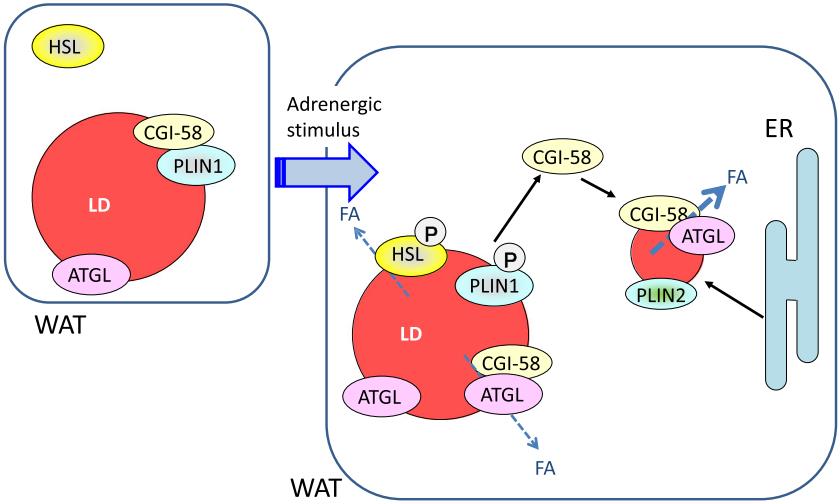Creative Biolabs launches perilipin expression assay based on iPSC-derived human sebocytes, which can help you study the effects of drug candidates on lipid metabolism and sebocyte function, accelerating your progress in screening and characterizing acne and hyper/hyposeborrhea drugs.
Perilipin, also referred to as lipid droplet-associated protein or PLIN, plays a crucial role in lipid metabolism and storage. It is primarily found in adipocytes and sebocytes, where it regulates lipolysis, the breakdown of stored lipids. Perilipin plays a role in sebogenesis and sebum lipid accumulation in vitro, as well as sebaceous gland growth in vivo. Perilipin expression is tightly regulated and can be influenced by various factors such as hormonal signals, nutritional status, and metabolic conditions. Increased perilipin expression is associated with enhanced lipid storage, while decreased expression can promote lipid mobilization and utilization.
 Fig.1 Hormonal regulation of PLIN1-dependent lipolysis in adipocytes.1
Fig.1 Hormonal regulation of PLIN1-dependent lipolysis in adipocytes.1
In recent years, the advent of iPSC technology has revolutionized the field of dermatological research by enabling the generation of human sebocytes from iPSCs. The perilipin expression assay utilizing iPSC-derived human sebocytes serves as a valuable tool for investigating the impact of drug candidates on lipid metabolism and sebocyte function. The following is the key workflow.
Acne vulgaris is a prevalent skin condition characterized by sebum overproduction, inflammation, and the proliferation of Propionibacterium acnes. Sebaceous glands, which produce and secrete sebum, play a significant role in the pathogenesis of acne. Lipid metabolism in these glands is regulated by perilipin. Through perilipin expression assay based on iPSC-derived human sebocytes, researchers can assess their potential effects on sebaceous gland function and sebum production. This assay provides crucial insights into the mechanisms underlying acne pathogenesis and imbalances in sebum secretion, offering a platform for screening novel compounds aimed at addressing hyper or hyposeborrhea-related skin conditions.
Creative Biolabs is dedicated to offering full services for stem cell treatment research. You can get a variety of cells derived from iPSC and a variety of analysis services for regulating diseases here. Please contact us for more details.
Reference
For Research Use Only. Not For Clinical Use.